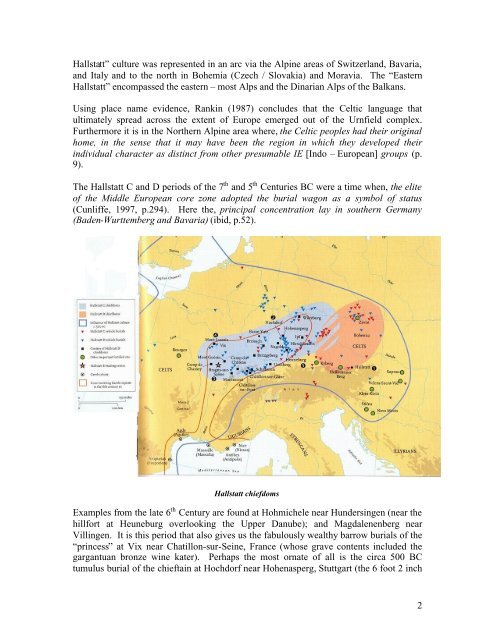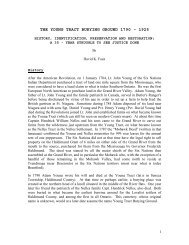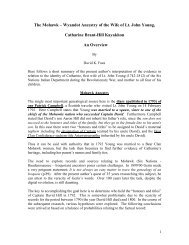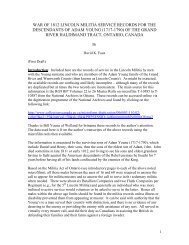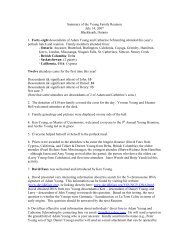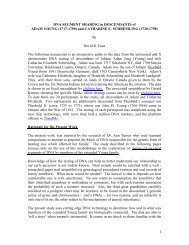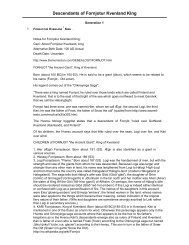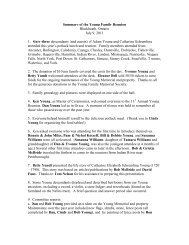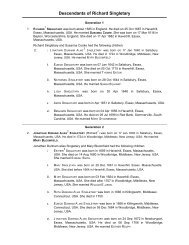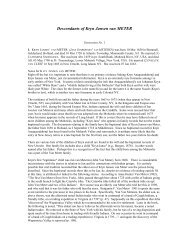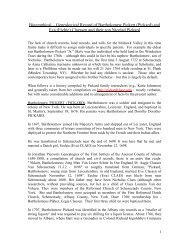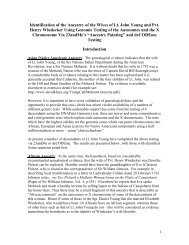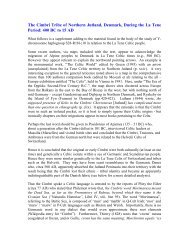Part 2 - Davidkfaux.org
Part 2 - Davidkfaux.org
Part 2 - Davidkfaux.org
Create successful ePaper yourself
Turn your PDF publications into a flip-book with our unique Google optimized e-Paper software.
Hallstatt” culture was represented in an arc via the Alpine areas of Switzerland, Bavaria,and Italy and to the north in Bohemia (Czech / Slovakia) and Moravia. The “EasternHallstatt” encompassed the eastern – most Alps and the Dinarian Alps of the Balkans.Using place name evidence, Rankin (1987) concludes that the Celtic language thatultimately spread across the extent of Europe emerged out of the Urnfield complex.Furthermore it is in the Northern Alpine area where, the Celtic peoples had their originalhome, in the sense that it may have been the region in which they developed theirindividual character as distinct from other presumable IE [Indo – European] groups (p.9).The Hallstatt C and D periods of the 7 th and 5 th Centuries BC were a time when, the eliteof the Middle European core zone adopted the burial wagon as a symbol of status(Cunliffe, 1997, p.294). Here the, principal concentration lay in southern Germany(Baden-Wurttemberg and Bavaria) (ibid, p.52).Hallstatt chiefdomsExamples from the late 6 th Century are found at Hohmichele near Hundersingen (near thehillfort at Heuneburg overlooking the Upper Danube); and Magdalenenberg nearVillingen. It is this period that also gives us the fabulously wealthy barrow burials of the“princess” at Vix near Chatillon-sur-Seine, France (whose grave contents included thegargantuan bronze wine kater). Perhaps the most ornate of all is the circa 500 BCtumulus burial of the chieftain at Hochdorf near Hohenasperg, Stuttgart (the 6 foot 2 inch2


